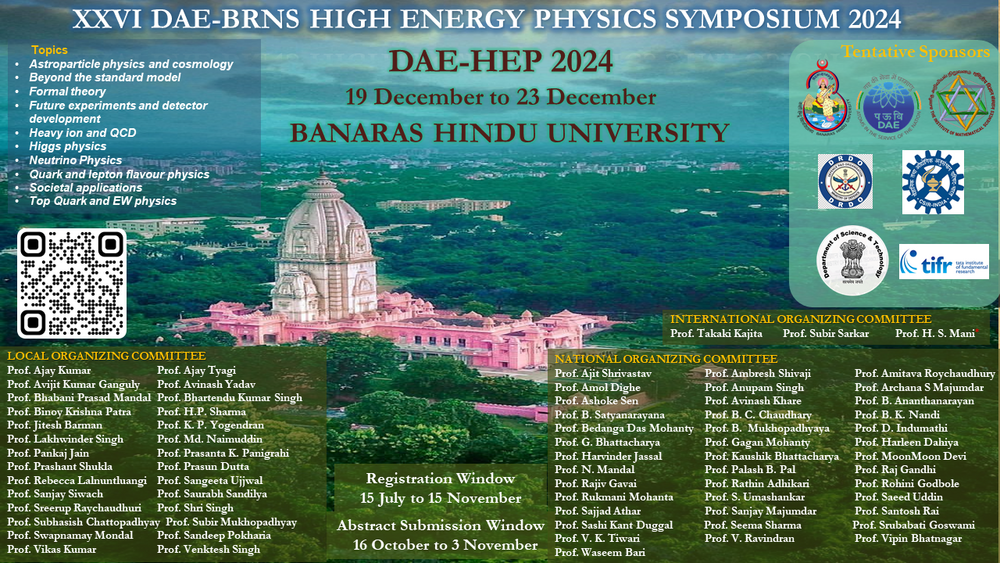Speaker
Description
Recent collider’s results in $B$ meson decays introduce some disagreement with the SM predictions. The LHCb results for the total branching fractions $Br(B →K\mu^+ \mu^-)$, $Br(B_s→\phi\mu^+ \mu^-)$ and the angular observable $P_5^{\prime}$ of $B_s→K^{\star} \mu^+ \mu^-$ decay, which are governed by the flavour changing neutral current (FCNC) $b→s\mu^+ \mu^-$ transition, show inconsistencies with the SM predictions [1]. Another important parameter is lepton flavour universality (LFU) ratio $R_{K^{(\star)}}$. The previous experimental results [2, 3] of $R_K$ and $R_{K^\star}$ differed from the SM prediction, indicating the violation of flavour universality. But the recent LHCb results [4] of $R_{K^{(\star)}}$ supersede their previous measurements and coincide with the SM predictions. Despite these new results, lepton flavour non-universality cannot be ruled out completely, since only $R_K$ measurement does not provide the complete picture, measurement of CP asymmetries in $B→K\mu^+ \mu^-$ and $B→Ke^+ e^-$ is also essential [5]. The authors of Ref. [5] have constrained the Wilson coefficient $C_{9e}$ using the new $R_K$ measurement, keeping $C_{9\mu}$ fixed. As per this recent experimental context of $R_{K^{(\star)}}$, we will consider four possible NP scenarios [6, 7] to study $B_s→(\eta,\eta^{\prime}) \mu^+ \mu^-$ decay. The first scenario involves universal NP couplings, the second and third scenarios have both universal and non-universal NP couplings while the fourth scenario incorporates only non-universal NP couplings. We will examine the sensitivities of the scenarios for the branching fraction and LFU ratio $R_{\eta^{(\prime)}}$. Finally, the outcome from these NP scenarios will be compared with the SM predictions to recognize which scenario will be more reliable to study $b→s\mu^+ \mu^- $transition.
References
- A. Crivellin, Anomalies in Particle Physics, PoS DISCRETE2022,
Baden, Germany, pp. 006 (2024) [arXiv:2304.01694 [hep-ph]]. - R. Aaij et al. (LHCb Collaboration), Phys. Rev. Lett. 122, 191801 (2019) [arXiv: 1903.09252[hep-ex]].
- R. Aaij et al. (LHCb Collaboration), J. High Energy Phys. 1708, 055 (2017) [arXiv: 1705.05802 [hep-ex]].
- R. Aaij et al. (LHCb Collaboration), Phys. Rev. D 108, 032002 (2023) [arXiv:2212.09153 [hep-ex]].
- R. Fleischer, E. Malami, A. Rehult and K. K. Vos, 21st International conference on B-Physics at frontier machine, [arXiv:2310.04170 [hep-ph]] (2023).
- A. K. Alok, N. R. Singh Chundawat and A. Mandal, Phys. Lett. B 847, 138289 (2023) [arXiv:2303.16606 [hep-ph]].
- J. Kumar and D. London, Phys. Rev. D 99, 073008 (2019) [arXiv:1901.04516 [hep-ph]].
| Field of contribution | Phenomenology |
|---|

